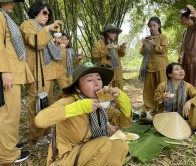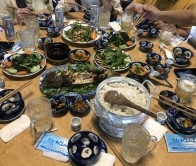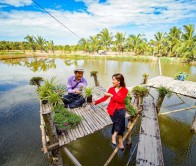Mekong River
Mekong River
The Mekong is a trans-boundary river in Southeast Asia. It is the world’s 12th-longest river[2] and the 7th-longest in Asia. Its estimated length is 4,350 km (2,703 mi),[2] and it drains an area of 795,000 km2 (307,000 sq mi), discharging 457 km3 (110 cu mi) of water annually.[3]
From the Tibetan Plateau the river runs through China’s Yunnan province, Myanmar, Laos, Thailand, Cambodiaand Vietnam. In 1995, Laos, Thailand, Cambodia and Vietnam established the Mekong River Commission to assist in the management and coordinated use of the Mekong’s resources. In 1996 China and Myanmar became “dialogue partners” of the MRC and the six countries now work together within a cooperative framework.
The extreme seasonal variations in flow and the presence of rapids and waterfalls in the Mekong make navigationdifficult. Even so, the river is a major trade route between western China and Southeast Asia.
In English the river is called the “Mekong River”, derived from “Mae Nam Khong”, a term of both Thai and Lao origin. In the Lao-Thai toponymy, “rivers” translates to “mother of water”, signalled by the prefix “mae”, meaning “mother”, and “nam” for water. In the Mekong’s case, Mae Nam Khong means “khong, the mother of water”.[4]Many northern Thai and Laos locals refer to it as the “River Khong”. Such is the case with the Mae Nam Ping in Chiang Mai which is known as the “Ping River“. The Tonle Sap in Cambodia is a similar example, where tonletranslates as “great lake” or “great river”, making the Tonle Sap River an unnecessary repetition of what is in fact the “Sap River”. In Khmer language, Mékôngk means “mother of water” translated as Mé “Mother” and kôngk forkôngkea “wate




![Victoria Mekong Cruise – Ho Chi Minh City – Can Tho – Phnom Penh(5D/4N) [UPSTREAM 1]](https://mekongeco.com/images/thumbnail/268-445/1-2-2.jpg)
